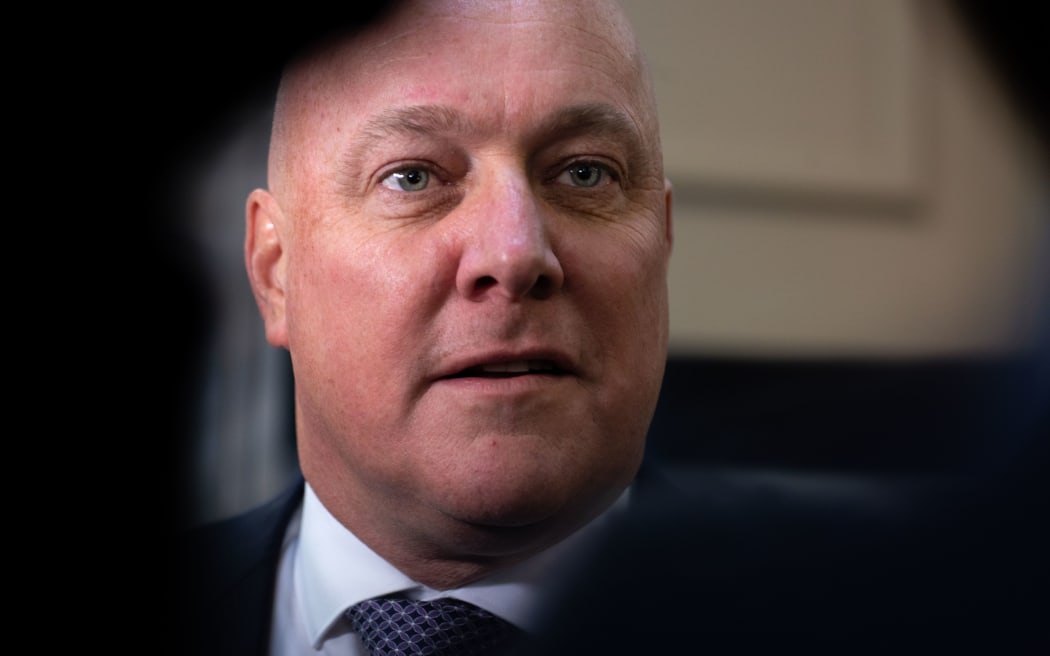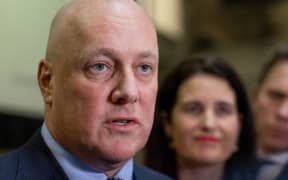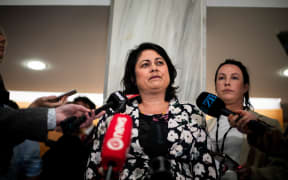
Photo: RNZ / Angus Dreaver
National is reviving its promise to set up a new medical school at University of Waikato, and says it would add another 50 placements in Otago and Auckland from 2025.
It would put about $300 million towards setting up the new school, including $280m in capital, with another $100m provided by the university.
The previous National government pledged to establish the third school in 2017, but the Labour-led government dropped the plans in 2018.
National's leader Christopher Luxon announced the policy at the university on Wednesday morning, saying the new school would be expected to train another 120 doctors a year from 2027, plus the 50 at Auckland and Otago.
Altogether, the operating cost of setting up the extra placements was estimated at $48.5m over four years.
It would also be on top of the 50 recently announced by the Labour government at a cost of $23m, which brought total placements to 589 a year.
"Currently, New Zealand does not train enough doctors to meet the demands of our growing and aging population, or to replace our retiring health workforce," Luxon said.
"Together, this will see an additional 220 doctors graduating a year by 2030, compared to just 50 more under Labour's plan.
"The new medical school will have clinical training alliances with other universities and medical facilities around regional New Zealand - a model that will deliver more doctors committed to serving in provincial and rural parts of the country."
Policy documents said the new school would operate under a graduate-entry only model, admitting students who had already completed a degree and allowing them to do four years of medical study rather than the five required for undergraduates.
This was based on a model from New York's Mt Sinai medical school, which found non-medical students performed on a par with science students and were more likely to go into primary care, the documents said.
The programme would involve training at the university in the first year, before moving to regional hospitals and larger community medical centres for the remaining three years.
The documents quoted World Bank statistics showing New Zealand had a relatively low ratio of medical schools to population, with one medical school for every 2.6 million people compared to one for every 2.1 million in the US, one for every 1.5 million people in the UK, and one for every 1.2 million people in Australia.
"A responsible government plans for the future, and that is exactly what a National government will do," Luxon said.
Te Whatu Ora Health NZ on Tuesday unveiled its own plans to boost overseas recruitment in the short term and increase training in the long term.
It also published new data showing estimates of the gaps in the health workforce, saying more than 1600 new workers across the health system would need to be added to current recruitment every year, just to maintain current staffing relative to the population.
Another 8000 nurses and 3400 doctors would be needed on top of that over the next decade, to cover shortfalls in meeting demand.
The National government in 2017 had invited universities to bid for funding to set up a new rural GP-focused medical school.
It followed an outcry from the existing Auckland and Otago medical schools over Waitako's proposal for a new $300m school in late 2016.
Labour dropped the plans for a third school in 2018.
Universities at odds over plan
The Univesity of Waikato welcomed the announcement in a statement, with vice-chancellor Neil Quigley saying the new school would be a fundamental step towards addressing health workforce needs.
"The third medical school will put us on the pathway to reduce the country's heavy reliance on importing doctors from other countries, which is unsustainable," Prof Quigley said.
He said the graduate-entry model had been highly successful internationally, and would build on the university's efforts to increase its health capability with a new nursing programme that had increased intakes from 40 in 2021 to more than 210 this year.
"The university is also currently developing programmes for other health professions in direct response to stakeholder needs within the region and the country."
However, University of Auckland acting dean of medical and health sciences Warwick Bagg said setting up a third medical school was unnecessary.
He said while the university welcomed National's commitment to increasing medical school placements, University of Auckland already operated throughout the upper North Island, including in Waikato.
"The University of Auckland has been exploring, at a high level, how it can offer more medical places over and above the domestic medical cap of 287 places for 2024, which was recently announced by the Minister of Health. The University is currently planning for a class size of 330 and can lift this to more than 460 by 2027," he said.
He said the university believed growing current sites would be the most cost-effective and efficient way of increasing medical school places.




